2014 Minnesota Vikings Draft Profile: Scott Crichton Breakdown
The Vikings selected Oregon State’s Scott Crichton with their third pick, 72nd player selected overall. By going back to the defensive front seven so quickly, Vikings brass provided a glimpse into how the defense will be built.
Crichton has an interesting story for how he got where he is today. He declared for the draft in January despite having a year of eligibility remaining. Crichton did so without seeking an evaluation from the NFL Draft Advisory Board, having already planned to make the NFL jump in order to help his family, letting his parents retire specifically.
At 6’2⅞” 273 pounds according to NFL.com, Crichton is an end on the shorter and thicker end of the size spectrum as a defensive end. His arm measures 32¾ inches at length, which is rather short for ends. He’s not a spectacular athlete either.
Crichton looks like an average player on the surface. His production tells a different story. He totaled 165 tackles, 51 tackles for loss, 22.5 sacks, 9 pass deflections, and 10 forced fumbles over his three seasons with the Beavers.
Let’s go beyond box score statistics and size measurements to find the real meat of Scott Crichton as a prospect and as a schematic fit for the Vikings.
The Details
The successes Scott Crichton has on the field most often come from his remarkable power. He’s built like a freight train, with barrel-shaped thighs and a stacked upper body. Crichton wins with leverage at the point of attack. His height plays a part in that.
Crichton combines the raw power he possesses with leverage and an unrelenting playing style. I like to compare his approach to a jackhammer. He violently drives himself into blockers, putting his helmet right underneath the chin of his opponent.
This skill is most applicable in a speed to power conversion as a rusher. That means Crichton comes off the ball with speed and generates power into the blocker through his built-up speed.
Crichton puts his helmet into the chest of the tackle and then extends his hands to dump him. He has the power to overwhelm blockers if able to set them up correctly, as he does here.
Even in taking a more direct route, Crichton shows off uncommon power. This is against Andrus Peat, one of the best offensive tackles in the country.
The common theme with both of these plays is the initial hand usage into the blocker. It’s crucial for any power rusher to win with his hands, beating the blocker into contact.
Doing so will get the blocker off balance or allow the end to take advantage of an off-balance blocker, as Crichton does here.
Crichton shrugs off the guard when he comes late to double and bowls over the quarterback. This play is also evidence of some of his inside rush potential and gap-splitting ability.
The reason power is such a crucial part of Crichton’s game, and the reason he wasn’t a first round pick, is that he’s limited as a rusher. He doesn’t have the burst, speed and flexibility to win around the corner. Even when Crichton does have a step, he cannot dip his shoulder and bend around the edge.
He just doesn’t hit a second gear to accelerate past the tackle. The stiffness of his hips and ankles limit his ability to run the circle as well. Crichton’s struggles on the edge limit the ways he can attack an offensive tackle.
For Crichton to win around the corner, it usually takes a big jump off the ball. It borders on guesswork sometimes.
Timing the snap perfectly isn’t sustainable for a defensive lineman and will lead to offsides penalties.
The overall point is that Crichton is not a dynamic pass-rusher. The speed, flexibility and go-to moves just aren’t there with him. He does possess a few traits that mitigate those issues and could further mask athletic deficiencies if built upon.
He must have a plan and he must be quick about it. Rushers make up for athletic limitations by being precise in their moves and using their hands properly. Crichton freezes the blocker with a quick lateral step and then finishes with his hands on each of these two plays.
That little bit of a lateral quickness goes a long ways. Crichton must use that to set up his pass-rush moves and keep opposing blockers off balance if he’s going to be a productive NFL rusher.
Hand usage is another elusive quality for Crichton in terms of consistency. He shows flashes of that here, adding to the last two plays.
Crichton frees himself by batting away the hands of the tackle. With his lack of length, it’s important to be precise with his hands to keep tackles from reaching him. These are some of the technician-like qualities Crichton has displayed in spurts but needs to employ more consistently.
Rushing from the interior is something Oregon State often asked him to do. Playing from the inside gives Crichton a more direct route and gets him into contact with blockers quicker, which better fits his skillset. His ability to rush with power has a more disruptive effect from the inside as well.
Crichton utilizes his strength and bull-rush ability to drive offensive guards backwards. When he’s aggressive enough with his hands and keeps his pads down, he can press the pocket to great effect.
One final silver lining with Crichton as a pass-rusher is the way he plays with his eyes up. He finds the quarterback well, tracking mobile quarterbacks to the perimeter with quick reactions. He also gets his hands up to deflect passes regularly.
He anticipates the cut block, plays off with his hands, and deflects the swing pass to get his defense off the field. Crichton makes his impact felt in a variety of ways on the field.
Opposing offenses most often felt Crichton’s impact in their running game. He is an immovable object at the point of attack. Running at him yields poor results.
As the front-side end, Crichton wrecks running games. He does a fine job of resetting the line of scrimmage. That means moving the point where he meets the block initially, the line of scrimmage, into the backfield.
In the same vein, Crichton is just a “clogger” at the point of attack. He can stand up the first blocker and then engulf a second one, eliminating running space for opposing ball-carriers and freeing up his linebackers to pursue.
Crichton is the right defensive end on this play. He controls the tight end to contain the run, then absorbs the pulling guard who’s supposed to lead up on a linebacker. Though the statistics won’t show it, Crichton had the biggest hand in stuffing this play.
Once again, the play design doesn’t call for two blockers on Crichton, but he’s too overwhelmingly powerful for one to handle. This type of play against the run will endear him to his linebackers.
Scott Crichton’s most dominant performance came against Oregon in a game where he primarily played nose tackle. The results, especially as a run defender, were even better than his typical production as a base end.
Crichton wins with leverage and blows back the center on first contact, swallowing up a second blocker once more. The theme is overwhelming disruption at the line of scrimmage. That will show up at any position on the defensive line.
He had plenty of other successes from the inside position as well.
His quickness of the snap and into the block gives the center too much to handle. The center needs to step laterally and reach Crichton for this call, but he’s up against it from the beginning.
When a blocker doesn’t get Crichton squared up properly, he cannot make the block. Crichton is just too strong and relentless to be turned if you can only get a piece of him.
The way Crichton pursues the ball while fighting off blockers is reminiscent of a bloodhound. If blockers don’t cut him off on first contact, they’ll never get it done. Crichton makes a lot of plays in the backfield by getting one step on blockers and incessantly working his way past them.
Outcomes are less positive if he has to take on a block straight on and cannot get underneath a blocker to blow him back. His lack of length and imprecise hand usage is what gives him issues here.
When Washington runs at him, Crichton does well to hold his ground against the block. He even locates the ball quick enough, but he can’t separate himself from the block. That will rarely be flagged as a hold when the end doesn’t do enough to earn it.
Crichton does everything initially correct again. He moves the blocker off the line of scrimmage. He picks his head up to locate the ball. His hands aren’t fighting off those of the tight end though. In plays like the last two shown, he must be disengaging from the block and getting in on the tackle in the hole.
All in all, that’s where growth is most needed for Scott Crichton. Both as a run defender and a rusher, he needs to become more of a technician with his hands. He’s never going to beat blockers repeatedly with purely athletic moves. Crichton’s career arc will be determined by the way he learns to best utilize his power and frame. That means improving his hand usage.
The Fit
I identified Scott Crichton as a natural fit for the end position in a Mike Zimmer defense before the draft. His selection didn’t surprise me, especially after lasting until the third round. He just fits the profile of what Mike Zimmer asks his defensive ends to do, which we will dig into shortly.
In terms of raw numbers, Crichton is what Zimmer has sought in the past. Mockdraftable.com provides interesting comparisons of draft prospects across classes in terms of height, weight and measured numbers from the scouting combine. These players compare most similarly to Scott Crichton.
The underlined prospects all played for Mike Zimmer at some point in time. It’s fair to say that he has a type, at least when he’s looking for depth defensive ends. Wallace Gilberry may have hit this list as well had he fully participated in the combine, because his measurements are similar to these guys.
A natural reaction to initially have after the announcement of the Crichton pick would have been to think “How is he gonna see the field?” With so much invested in Everson Griffen and Brian Robison at the end position, it’s a question worth asking.
Griffen and Robison will see the bulk of snaps at the position. This much is evident. Every defensive line in any level of football gets rotated in and out of course. The convenient part is that the Vikings’ current personnel has a close approximation to what Mike Zimmer used with Cincinnati.
The Bengals employed Carlos Dunlap and Michael Johnson as their starting ends in 2013. Those two were on the field most often. Their reserve ends were Wallace Gilberry, Robert Geathers and Margus Hunt. Gilberry was their third end, seeing the field much more than the other two reserves.
Even though the Vikings brought in Corey Wootton, Scott Crichton projects as that third defensive end down the road. Crichton is probably a better player right now. Wootton only has a year on his contract anyways.
Gilberry is also vaguely similar to Crichton in a few different skills. So how does Mike Zimmer use rotations along his defensive line, and where does his third defensive end play?
I totaled up snap counts for the Bengals defensive line through their first three games of 2013.They played Chicago, Pittsburgh, and Green Bay in those three. Snaps were only counted from four man fronts. Other fronts were sparingly used.
The number given is the average snap count per game at the position over the course of these three outings out of a total 63.3.
Wallace Gilberry played the majority of his snaps as an interior rusher in nickel packages. He also played a decent amount at the right end position in relief of Michael Johnson. According to Pro Football Focus premium, Gilberry played 548 out of a possible 1147 snaps in 2013, which is 47.7%. If Crichton is in fact a direct comparison to Gilberry for Mike Zimmer, that’s a significant snap count.
The skills Crichton has, at least for day one, may translate better to play on the interior anyways. Expect the Vikings to play him on the inside as a sub-package rusher more than as a base end.
Interior disruption is the quickest way to move a quarterback off his spot, which throws off the timing and rhythm of the passing game. Either through moves into gaps or collapsing the pocket, a pass-rush presence on the inside is what Crichton will need to be first and foremost.
Gilberry uses a bull-rush and separates from the block to pick up a sack on this play. Crichton certainly has the capabilities to rush with power and shrink pockets from the inside.
A bonus with Crichton is that he’s a capable run defender from the interior as well. Most rushers who kick inside can only do so in obvious passing situations. Crichton’s strength at the line of scrimmage and ability to hold his gaps mean he would not necessarily need to be rushed off the field in reaction to offensive substitutions.
No matter the alignment, Zimmer asks a lot of his defensive lineman. He emphasizes the importance of gap discipline in pass rushing. His defense has success against mobile quarterbacks because of this.
Whether stunts or blitz packages are used, the rusher must hold his ground and maintain discipline as a rusher to collapse the pocket and keep the quarterback hemmed in. All defenses want their rushers to do that, but Mike Zimmer’s defenses have shown a special knack for it.
Blitzes between the tackles are quite common. In those cases, the ends have to contain the quarterback.
Carlos Dunlap rushes with discipline from the outside and plays the scramble well to contain it and then deflect the throw. Crichton projects well in this type of scenario as an end who can rush with power instead of having to use a finesse rush move that could get him wedged off his lane.
What Crichton brings to the table as a rusher will be a big determinant of his value with Minnesota, especially early in his career. Sub-packages on passing downs is where he will see the field most often. For example, opposing offenses threw on 76.1% of Wallace Gilberry’s snaps in 2013 per Pro Football Focus.
Crichton could be the recipient of more rotational snaps as a base end because of his prowess in run defense. He certainly has the traits to be an eventual replacement as a starting end because of his all-around abilities.
The end position isn’t all that different in Mike Zimmer’s defense than it was in the previous scheme, but we can go through some of the things Scott Crichton would see in snaps as an edge player against the run.
Cincinnati is in an over front here, which means that the 3 technique tackle is on the strong side and the weak-side linebacker is stacked behind him. Zimmer leaned on this front in 2013. Right end Michael Johnson is the one I’m highlighting.
He does a decent job here because he’s kept the edge and turned it back inside but more should be expected against a tight end. Scott Crichton has the get-off and strength to jolt the tight end backwards and compress the running lane. Johnson stands up when he meets the block, playing it in a more passive fashion.
That’s what a front-side end will often be tasked with against a power scheme. Against a zone scheme, the end’s job becomes even more important, especially against outsize zone calls.
In most cases, the front-side end will see a double team initially as the guard combo blocks to the linebacker. Carlos Dunlap does it much better in the first example than Wallace Gilberry does in the second.
Crichton is so stout at the point of attack that this won’t be an issue for him. His experience as an interior run defender is crucial. He maintains balance when taking on blocks, keeping a wide base and planting his feet into the ground. The longer the end holds out, the more time the linebacker has to make the play.
Mike Zimmer used more of the 4-3 over front with the Bengals but considering personnel, he could use more of the 4-3 under look with the Vikings. That places the 3 technique tackle opposite the tight end or strong side and slides the “Sam” linebacker up to the line of scrimmage, flanking the defensive end.
Left end Carlos Dunlap is the player to eye. He has the role that makes the most sense for Crichton in an under front.
With the linebacker to his outside, the end has almost become a 5 technique like a 3-4 defensive end would be. Some 4-3 teams like the Seahawks will even give this end two-gap responsibility, as they did with Red Bryant. It looks like that could be the case for Dunlap on this play, because he plays the tackle straight up before he tries to shed the block.
We have seen the way Scott Crichton holds his ground when teams run at him. He can realistically play end on the strong side of an under front, maybe even be given two gaps to control. Crichton eats up space at the line of scrimmage the way a 3-4 end is supposed to.
Those same skills also apply as a rusher. The end who is flanked by the linebacker is the table-setter.
The right end (left side of the screen) is Wallace Gilberry. He frees up James Harrison to pressure the quarterback. The center is trying to peel around and find the back-side rusher, but Gilberry has pushed the tight end too deep.
This is where the 4-3 under front has so much potential for the Vikings. Crichton has the raw power to reset the line of scrimmage as the strong-side end. He’s stout enough against the run to be given that type of responsibility. He also has the space-eating capability to free up a rushing linebacker.
This is how a 4-3 under front might look if Scott Crichton is used as a strong-side defensive end.
That’s where Anthony Barr comes in. If Barr is left unblocked, opposing quarterbacks will hardly be able to get turned back around. Closely examining the traits needed to play the strong-side end position in the 4-3 under, it’s a great fit for Scott Crichton. Neither Everson Griffen nor Brian Robison project as that type of defensive end. While this front probably won’t be the preferred look for Zimmer, having Crichton can give him the versatility to change looks without sacrificing how his players fit.
The important thing to remember is that rotations are going to be important. Having capable defensive ends beyond the two starters is an absolute must against offenses that want to spread the field and quicken their pace, which have become more frequent in today’s NFL.
Don’t be turned off by the selection of Scott Crichton because there’s no clear path to a starting position. He immediately upgrades the third end spot, which is a player that Mike Zimmer has heavily utilized in the past as an interior rusher and as an edge defensive end in spot duty.
Everything about Crichton points to a defensive end who will be a Swiss Army knife for Zimmer in terms of scheme and who will be a reliable, capable player. Building the front seven is the quickest way to bring the defense back to a level that keeps the Vikings in games. Scott Crichton is a step in the right direction.
Gifs courtesy of DraftBreakdown.com and NFL Game Rewind.

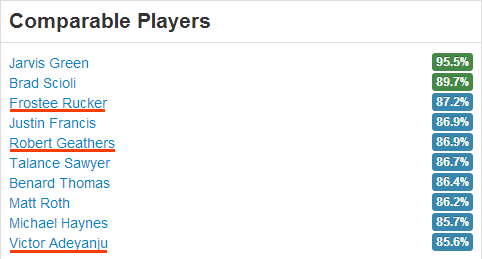


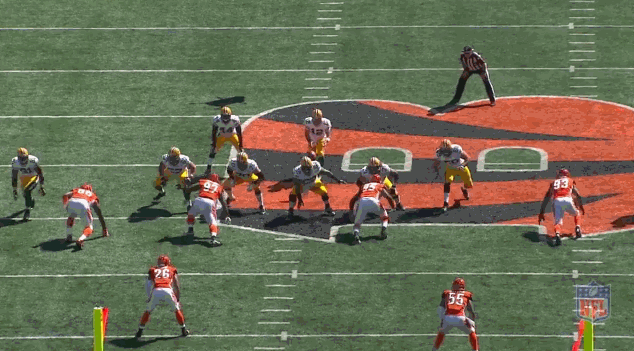

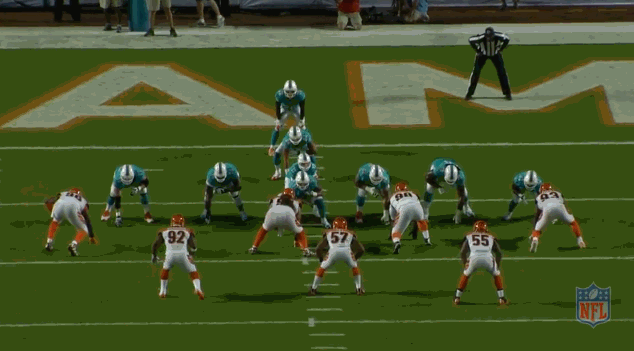

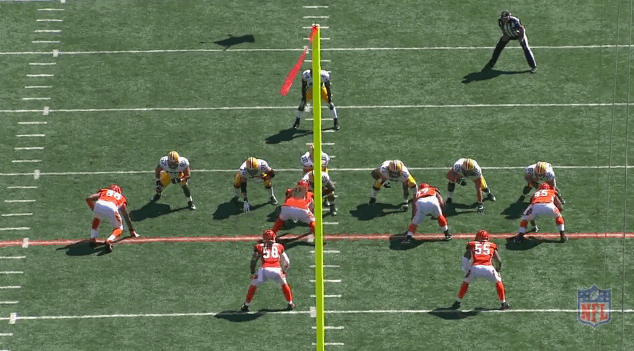
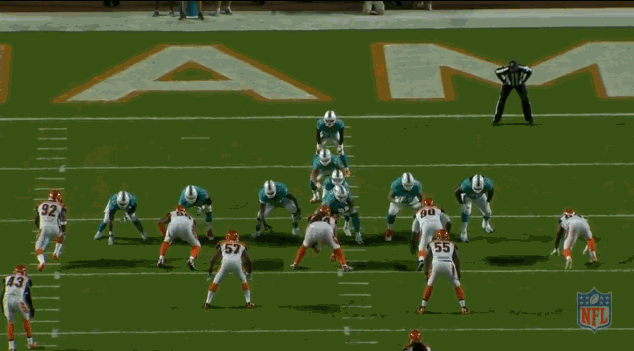
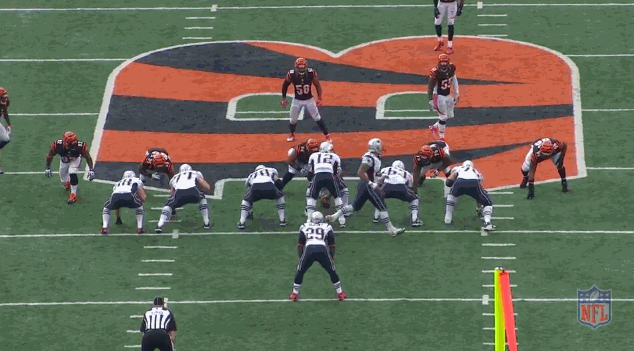
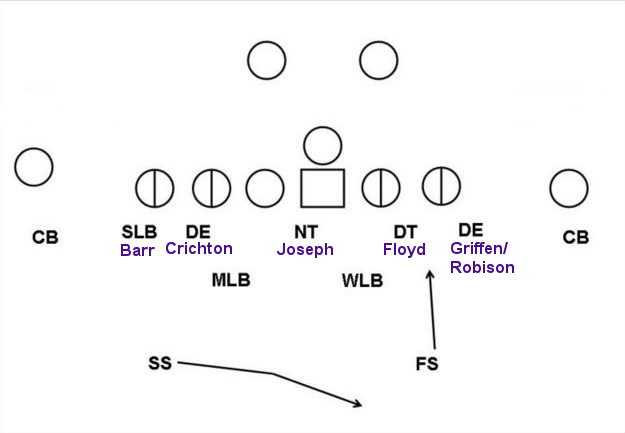
You must be logged in to post a comment.